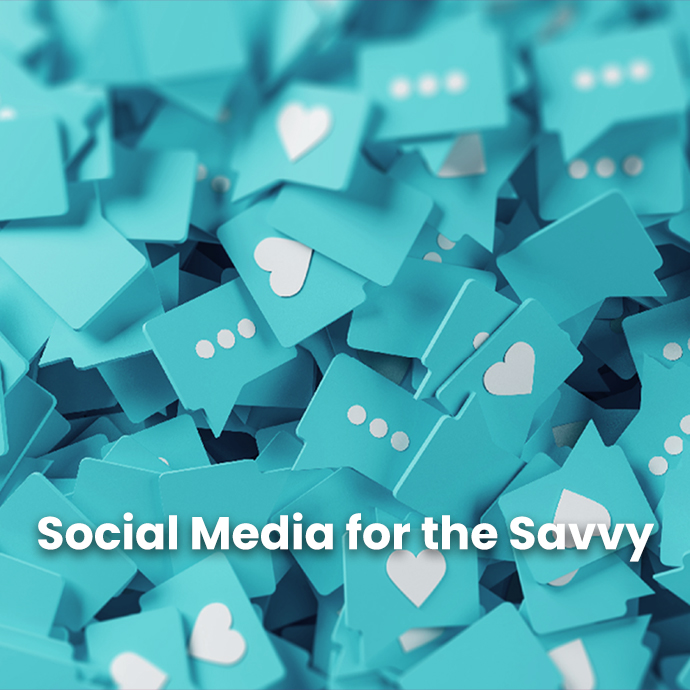
Social Media is a huge thing – right? You’re on it, your mum’s on it. But should your business be on it? The answer is probably yes.
Now, in 2019 (and from now on) interactions on social media will have their own social rules, cues, and norms – just like “real-life” person to person communication.
When you go into a restaurant or a clothing store or a bank you expect a certain type of interaction from the staff there – anything falling short of your expectation could mean that you leave with a bad taste in your mouth. Customers and users in 2019 are developing standards and expectations of online interaction and the team at Conversion Marketing wants to make sure you’re ticking all the boxes so the stellar customer/client experience you’ve cultivated through your offline efforts is translated onto your social media platforms.
Here are a handful of handy tips and tricks straight from the horse’s mouth – (Anna)
1. Pick and Choose Where to Play

There’s nothing worse than spreading yourself too thin so before you jump into the Social space, guns blazing, you need to consider what and how much time you have to devote to social media. Facebook pages, Instagram feeds – they’re like puppies; be a responsible owner and only get one if you have the time to feed, play with and clean up after it.
Have a bunch of great visual content? Instagram is the place for you! Posting regular thought leadership blogs on your site? Make sure you’re on LinkedIn. Want to engage with your customers on a regular basis? Facebook’s the place. If you have time for all of it then great! If not – pick a team, play hard.
2. Have a plan of attack

Social media needs a social strategy. You need to consider;
- What are you going to post?
- When are you going to post?
- Who are you talking to?
- Where is all your content going to come from?
- How will this translate into more business for your company?
- What messages about your business are ultimately being communicated through your social efforts?
A content calendar is a great place to start. Look ahead 6 months – what are the key periods for your business? Christmas? School Holidays? Seasonality? Once you have those plotted out you know what content you need and when. There’s nothing worse than coming into a busy period, knowing you need to communicate something, but being completely unprepared.
3. Be Consistent
Social Media is a great way of building authority and reputability. Being consistent with all your activity shows your customers and users that you’re there for them. If someone ends up on your Facebook page and sees the last time you posted was May 2016 they won’t be impressed.
Be consistent, post regular updates and show the world what’s up. But also be conscious – this leads us nicely into our next point.
4. Don’t post for the sake of it
Your content needs to be relevant to your business. Don’t forage for content to post because you feel like you should be doing it X amount of times a week. Some weeks you’ll have more to say, some weeks you’ll have less. Your content needs to be genuine, engaging, and add value for your customers and your business. Memes are hilarious, I know – but don’t throw one up because you have nothing else to show. At the end of the day, you want QUALITY over QUANTITY.
5. Still on the posts – Post WELL, Post CLEAN
I’ve seen hundreds of social media posts, pages, and stories. My biggest peeves (not even pet peeves – huge peeves) are posts with spelling mistakes and bad imagery. Proofread, proofread, proofread. Oh, and make sure you proofread. I can’t recommend programs like Grammarly enough – I’m using it right now.Also, as it’s common knowledge that posts with images perform way better than solitary text posts. Just make sure you’re using high quality, unfiltered imagery that is completely free from watermarks.
6. Pump the breaks on the self-promotion
People don’t want to spend their social media time being sold to. A little bit is fine, but not all the time. If every post includes a “buy this” or “download now” you’ll start to alienate the audience you’ve worked too hard to grow. Some industry experts suggest an 80/20 split, with 20% of your posts being sales related. I’m not going to give you an ideal number because you’ll know what works for your business better than I do, just play it smart with those CTAs (sales focused ‘call to action’ statements/buttons).

7. To Hashtag, or not to Hashtag?
Hashtags are a fickle beast. They can be awesome or make your posts look noisy. They all depend on your network.
Hashtags were invented on Twitter in 2007 so if you’re tweeting up a storm, hashtag to your heart’s content (but stay within our quality over quantity ethos). Instagram has also recently released a feature where you can ‘follow’ hashtags, so using them on Instagram is a great way of getting in front of an in-market audience there. Instagram will also notify users if they have liked a certain amount of posts in a week with a certain hashtag – prompting them to follow.
Personally, I think Hashtags on Facebook are a waste of time. The Facebook algorithm doesn’t recommend posts based on Hashtags so unless you’re sharing a post on Facebook from another platform I’d give it a miss.
So team, here are the key takeaways (or as I like to call it; the Fish and Chips)
- Treat your social media pages the way you would an outlet of your physical business. It’s an extension. Make sure your tone, aesthetic and experience are consistent.
- Pick the channels that are right for your business and devote your time to those
- Plan! Plan! Plan!
- Quality over quantity – hashtags, posts, content etc.


